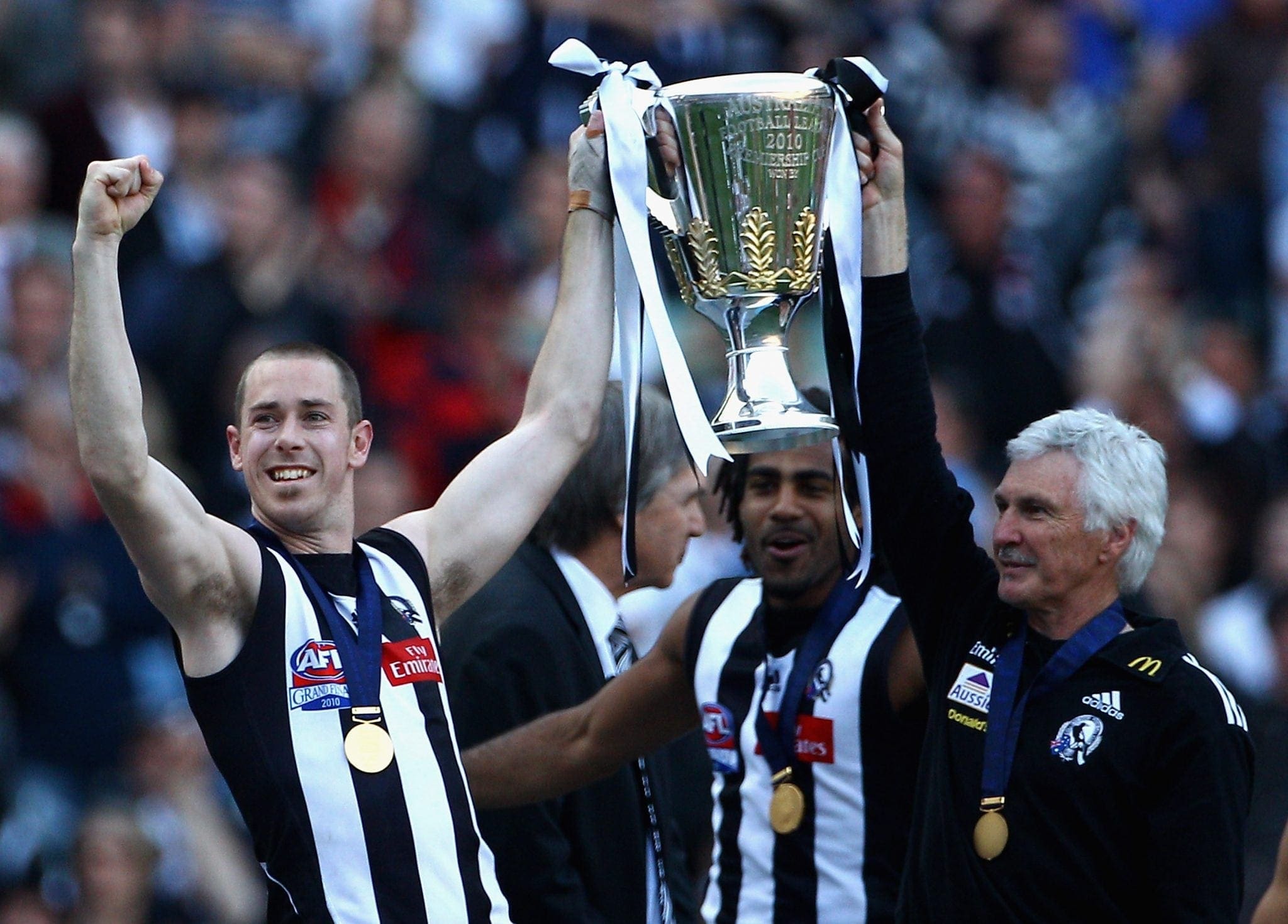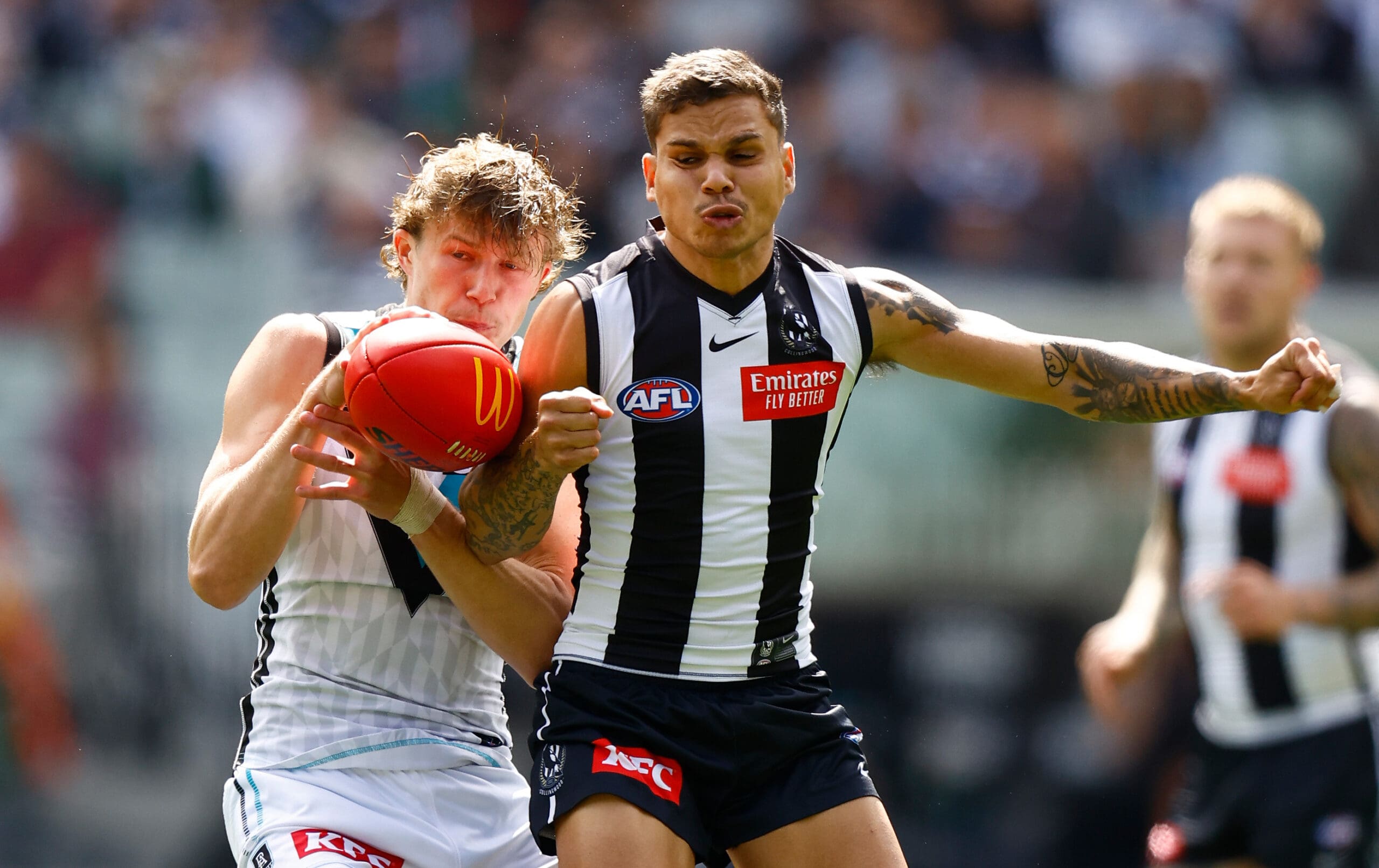From high-flying marks to bone-crunching tackles, and players bursting from stoppages to courageous plays, these are all part of what makes our great game. However, nothing compares to teams being adventurous and taking the opposition head-on with extravagant ball movement. Over a century, kicking goals and recording substantial scores is what attracts spectators to matches.
Of course, there will be rain-soaked contests resembling a bar of soap. The 2012 match between West Coast and Hawthorn at Subiaco Oval, and a fierce bout between Carlton and Essendon at the MCG in 2017 come to mind.
Even the most pristine conditions have seen games end as a slog fest. One of those being between Carlton and the Western Bulldogs in Round 19, 2000 - when Bulldogs coach Terry Wallace implemented the flooding method.
But to dive deeper into why scoring has dipped, and how it could undergo a potential rise in 2023, we need to go back to the start of the 21st century.
In 2000, teams were scoring with frequent regularity. Back then there weren't eight coaches sitting in the box implementing tactics to negate opposition scoring. It was all about out-scoring opponents, that is what decided matches. Essendon was the benchmark for tearing teams on the scoreboard. At all costs, the Bombers out hunted and outran opponents into submission, thus averaging a whopping 128 points per game.
In only three of the Bombers' 25 games en route to a barnstorming premiership campaign, they were held to under 100 points. Identical to Essendon, Carlton played with a free attacking style, using their kicking skills to slice apart the opposition. Although the Blues were held under three figures eight times, scoring wasn't an issue. In 17 of their 25 contests, Carlton put up over 100 points, scoring 150 or more points seven times. During that season, 10 of the 16 sides averaged more than 100 points, which to this day is the most in the last 23 years.
As the 2000s went by, scoring was still the norm, with teams not losing their sense of dare to be creative. Whilst Essendon was the first side of many to take the bull by the horns, Brisbane became the next side to take over the mantle. After copping a 74-point hiding to Carlton at Optus Oval in Round 8, Brisbane went on a blitz, winning 16-straight games en route to the first of three successive flags. Only on four occasions were the kings of the jungle restricted to under triple digits.
To generate lofty scores, a team needs to have tremendous depth across all areas, especially in the midfield and up forward. That's exactly what Brisbane had. Led by their 'fab four' midfield brigade in skipper Michael Voss, Nigel Lappin, Jason Akermanis, and Simon Black supplying power forwards in Alastair Lynch and Jonathan Brown constantly.
During their golden era, Brisbane averaged over 100 points - 115.4 in 2001, 114.5 in 2002, 104.3 in 2003, and 111.2 in 2004. This era saw notable premiership contenders make a living from kicking major scores.
Port Adelaide and St Kilda took the throne by beating opponents through heavy scoreboard pressure. From 2001 to 2004, the Power ranked in the top four for points scored with averages of 112.4 in 2001, 107.3 in 2002, 101.3 in 2003, and 109.7 in their 2004 premiership year.
After the appointment of Grant Thomas, St Kilda rose from the wilderness and made scoring a clear emphasis. After ranking in the bottom three from 2000 to 2002, St Kilda made the jump in 2003, finishing 10th in scoring, averaging 95.2 points per contest. In the next two seasons, the Saints made a major leap, finishing top two for points, averaging 111 in 2004 and 109.4 in 2005.
There is one campaign where a particular team in the Harbour City bucked the trend: the Sydney Swans.
In breaking a 72-year premiership drought in 2005, the Swans defied the fast, free-flowing style most teams were playing with. Instead, it did the opposite, incorporating a dogged defensive game, wearing the opposition out through their hardness. The dour struggle caught the attention of then-league CEO Andrew Demetriou, who criticised the defensive tactics, suggesting the team will lose more matches than they will win.
Sydney is the only premiership side in the 2000s not to have finished top four in scoring and average under 100 points (89.7 points per game).
In the late 2000s, Geelong became the next side to go flat sticks with clinical ball movement. Most notably starting with a 157-point Round 6 shellacking of Richmond, where the Cats registered 35.12.222, thus kickstarting a golden era of three flags in five seasons from 2007 to 2011.
The Western Bulldogs soon followed suit in becoming the next expansive side to run the opposition off its feet.
Under Rodney Eade, the Bulldogs went nuclear with the speed of ball movement, slicing opponents into ribbons. Most notably under the Docklands roof where scoring since the opening game in 2000 between Essendon and Port Adelaide has been renowned for goals galore. The Bulldogs made a living under the closed roof. In 38 contests from 2008 to 2010, the side scored 100 or more points in 26 of those matches. Their average scores at Docklands include 118.2 points in 2008, 105.5 points in 2009, and 107.3 points in 2010. All coincidently resulting in a hat-trick of preliminary final appearances.
As the era rolled into the 2010s, Geelong was still the benchmark in generating winning scores. But as trends in footy always occur, a formidable force began to take over. Under the legendary Mick Malthouse, Collingwood became the next team to join the scoring extravaganza. Whilst proven to be an excellent scoring side in recent seasons, the swooping Magpies hit their straps in their 2010 premiership year. Defying convention by using the boundary to create attacking forays, the side possessed several elite ball users to execute Malthouse's game plan.

En route to their first flag since 1990, Collingwood made the MCG a fortress, only losing twice all year, accumulating an average winning margin of 50.6 points.
The following season (2011), while not resulting in back-to-back premierships, the Magpies pummelled opponents unmercifully. During the home and away season, Collingwood was held under 100 points only five times. Their winning margin was 57.2 points, a run that included giving North Melbourne double hidings by 87 and 117 points respectively, and a 138-point annihilation of the then-lowly Port Adelaide at Football Park.
Next to take the scoring mantle would be Hawthorn, whose hat-trick of flags from 2013 to 2015 made them the first side to three-peat since the iconic Brisbane Lions outfit from 2001 to 2003.
Like Malthouse's Collingwood, Hawthorn under Alastair Clarkson had elite kickers who could execute his game plan. Most remarkably half of the Hawks' premiership teams consisted of left-footers e.g. Luke Hodge, Jordan Lewis, Grant Birchall, Cyril Rioli, Sam Mitchell, Jarryd Roughead, Isaac Smith, Brent Guerra, Matt Suckling and Ryan Schoenmakers.
Possessing by far the superior kicking skills of all 18 sides, Hawthorn led the league in scoring during their hat-trick of premierships, averaging 114.7 in 2013, 111.7 in 2014, and 111.4 in 2015.
Richmond would be next in successfully executing a play-on-at-all-costs game style, accumulating three flags in four seasons from 2017 to 2020.
Since 2010, many teams have tried the same strategy, from Port Adelaide in 2014, the GWS “Orange Tsunami” in 2016, and Melbourne in 2018. However, no team has consistently generated what Geelong, Collingwood and Hawthorn accomplished.
Excluding the COVID-hit 2020 year, 2019 through to 2022 saw no side average 100 or more points.
It goes to show how much tactical strategies coaches are gearing, with meticulous game plans completely flooding the opposition's attacking 50, making scoring harder than ever before.
As of recent times, there is a slight tidal wave of momentum shifting amongst teams in being more ambitious with the ball in hand.
Bringing in the 6-6-6 rule at the start of the 2019 season took some adjusting, however, the results are slowly starting to show. There is more space for players to operate, therefore opening the game up for teams to be extra attacking.
Collingwood is the perfect example.

Last season under new coach Craig McRae, the Magpies embodied the fast chaotic game style of bringing the ball into the corridor and attacking the opposition at all costs.
Other sides have followed suit, including Sydney. Through the opening two rounds of season 2023, Collingwood, Essendon, Sydney, Melbourne and Port Adelaide have been extra daring by trusting their gameplan and the early going is reflecting those results.
Although only a small sample size to go by, sooner than later the other 13 teams will have to take the plunge and join what may be a revitalisation of free-flowing scoring.
























